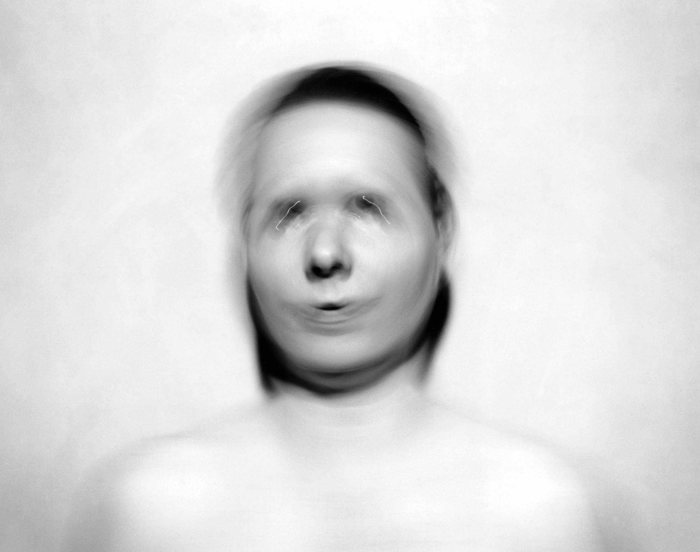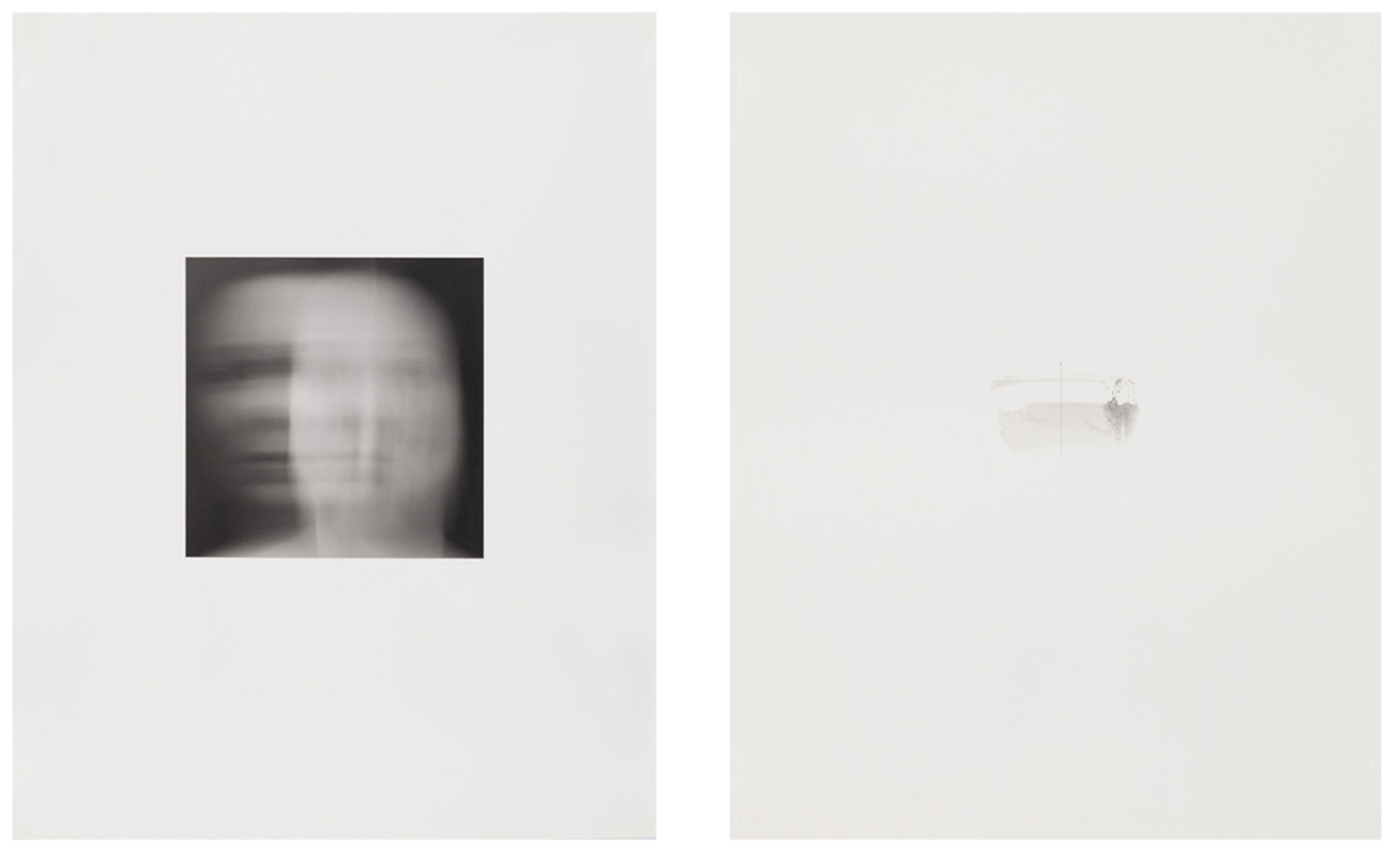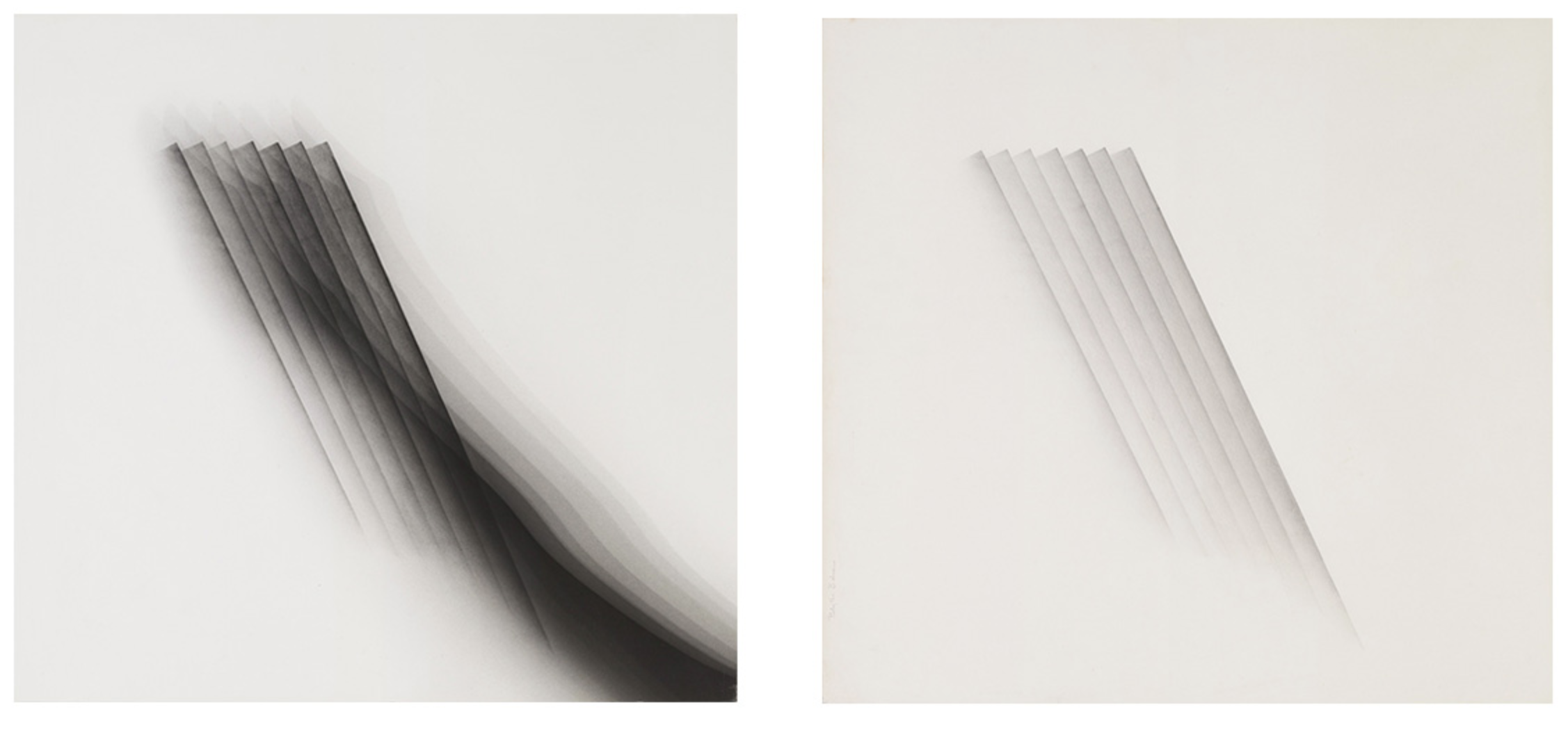“I am interested in the forms that result from the kinesthetic reaction to a given situation. Similar motions in different media are translated into a variety of forms. A single line, a system of points, or a grid define a repeated set of limits that narrows the possibilities for motion so it can be studied. The structure of the form reflects the motions possible for humans: the straight push-pull of the hinge joint and the curves from pivots around a fixed point, or in motion...I am interested in being deliberate about this last outpost of human sensibility.”
Blythe Bohnen’s body of work is a notable example of the analytical, introspective experiments that occurred in the early years of conceptualism. Beginning her career as a painter, Bohnen explored the effects of gestural motion on canvas through a series of paintings that isolated and amplified individual brushstrokes. Her aim was to capture the process of human motion as it happened in real time, in accordance with her own body. Even the subtlest changes in the pressure and speed of her hand would effect immediate shifts in the thickness and trajectory of each line.
Bohnen establishes rigid guidelines before she begins each work. This methodology, practiced and refined over several decades, allows Bohnen to sharpen her awareness of the space consumed by her work. Though she drifted away from painting as her primary medium early on in her artistic career, Bohnen still maintained the same urge to hone her attention on the nuances of gestures. Much of Bohnen’s work showcases the ways in which she uses the contours of the grid to guide her practice.
By 1973, Bohnen had transitioned out of color to focus her energy on monochrome expressions through graphite drawings and photography. In a series of drawings for her 1975 MATRIX exhibition at the Wadsworth Atheneum, Bohnen created several works on paper in which she used the edge of a graphite bar to form small, abstract shapes that varied ever-so-slightly in their curves and gradations. Each sequence reveals a highly analytical study of motion. In one such drawing, titled Motion Touching Five Points, Bohnen appears to replicate a single gesture eight times, separating them into two even columns. Each rectangular, amoeba-like structure is self-contained and limited to a single cell within an invisible grid.
Like her minimalist contemporaries—many of whom also applied a gridlike structure to their compositions—Bohnen resists any deep metaphorical readings into her work; she insists that every drawing is simply a series of marks on a surface. This keen focus on the physical element of artmaking inspired Bohnen to explore a similar process through photography. By centering herself as the subject of the image, Bohnen intentionally distorted the self-portraits with various movements as well as manipulations of camera speed that disrupted any clear representation of her body. Bohnen’s exploration of human gesture across multiple media raises questions about the role of the artist in artistic production, particularly in the wake of ever-evolving technologies.
In contrast to many of her postmodern peers at A.I.R., Bohnen did not produce work that clashed stylistically or philosophically with minimalist and conceptualist movements. She was neither at odds with the mission of the gallery, nor opposed to the women that took a firmly anti-minimalist stance. Bohnen’s practice allowed her to occupy two worlds, wherein she never compromised her politics or her art.
Blythe Bohnen was born in 1940 in Evanston, Illinois and attended Boston University of Fine Arts and Hunter College, where she obtained her Bachelor’s degree and Masters in Fine Arts, respectively. Bohnen worked as a lecturer at the Metropolitan Museum of Art, and also as a professor at the Parsons School of Design from 1967 to 1972, during which her fascination with the science of movement deepened. She was the recipient of the National Endowment for the Arts Fellowship in 1978 and received multiple Artist in Residency Grants.
member 1972-78 | 1940–2022 | New York, NY
+ Select Exhibitions
Groundings, 2018-19, MCA Chicago
Extraordinary Women, 1977, MoMA
MATRIX 13: Blythe Bohnen, 1975, Wadsworth Atheneum
+ Selected Press
The New York Times (1989) - Likeness: A Subjective Concept
The Christian Science Monitor (1974) - Anatomy of a Brushstroke
+ Publications
Blythe Bohnen and the Concept of the Body in Movement: From Plan to Line, 2018
Art in the Seventies, p. 38-39, 1980
+ Collections
International Center of Photography
The Museum of Contemporary Art Chicago
David Hall Fine Art
Whitney Museum of American Art
The Museum of Modern Art
The Art Institute of Chicago
Albright-Knox Art Gallery







